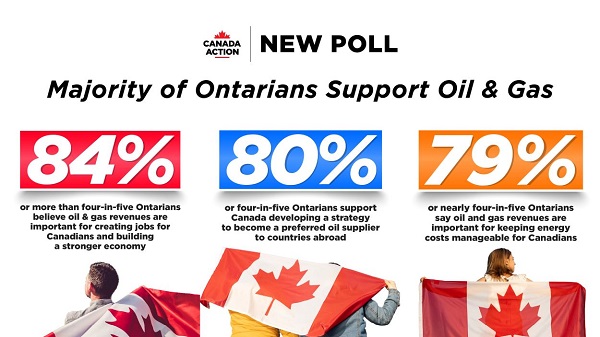Uncategorized
Caravan migrants explore options after Tijuana border clash

TIJUANA, Mexico — Many among the more than 5,000 Central American migrants in Tijuana were urgently exploring their options amid a growing feeling that they had little hope of making successful asylum bids in the United States or of crossing the border illegally.
Most were dispirited on Monday, a day after U.S. agents fired tear gas into Mexico to turn back some migrants who had breached the border. They saw the clash and official response as hurting their chances of reaching the U.S.
There was a steady line outside a shelter at a tent housing the International Organization for Migration, where officials were offering assistance for those who wanted to return to their home countries.
Officials also reported more interest from migrants wanting to start the process staying in Mexico. A job fair matching migrants with openings in Baja California saw a growing number of inquiries.
“What happened yesterday harms all of us,” Oscar Leonel Mina, a 22-year-old father from San Salvador, El Salvador, said about Sunday’s border clash.
Mina and his wife and their toddler daughter avoided the march and were glad they did after hearing others recount what unfolded, he said as he sat in the doorway of his family’s tent at Tijuana sports complex using a toothbrush to clean the fine dust that coats everything off his sneakers.
At the tent next door, 23-year-old Brandon Castillo of Santa Rosa, Guatemala chimed in that “they say it was the whole caravan, but it wasn’t the whole caravan.”
The events made Mina rethink his family’s plan of making it to the U.S. He says he’s heard people talk of Rosarito, a beach town popular with U.S. tourists about a 40-minute drive south of Tijuana.
There “you can earn money and live well” if you’re willing to work, he said. He set a goal of trying to move his family out of the shelter in another week.
Mexican security forces stepped up their presence at the complex where thousands from the migrant caravan have been sheltered, apparently seeking to avoid a repeat of Sunday’s ugly scene.
Tijuana public safety secretary Marco Antonio Sotomayor Amezcua said in a news conference that Mexican police would be prudent in their use of force, but “we have to guard at all cost that the border posts are not closed again.”
Sotomayor said he hopes migrants who had thought of entering the U.S. illegally learned from Sunday’s events that that won’t be possible.
Migrants hoping to apply for asylum in the United States must put their names on a waiting list that already had some 3,000 people on it before the caravan arrived in Tijuana. With U.S. officials processing fewer than 100 claims a day, the wait time for the recent arrivals stands to take months.
That has instilled a sense of desperation among many after their grueling trek from Central America. Sunday’s incident began after hundreds marched to the border to try to call attention to their plight. Some attempted to get through fencing and wire separating the countries, prompting volleys of stinging gas.
Cindy Martinez of San Vicente, El Salvador, said she had been about to cross the concertina wire to the U.S. side when the tear gas was launched. She estimated about 20 people had already passed in front of her, and parents begged agents not to unleash the gas because there were young children present.
“I see it as impossible for them to want to give us asylum,” she said. “Because of the words that President Donald Trump has said, I think this is impossible.”
Martinez, 28, said she was now considering getting work in Tijuana.
Mexico’s National Migration Institute reported that 98 migrants were being deported after trying to breach the U.S. border. The country’s Interior Department said about 500 people attempted to rush the border, while U.S. authorities put the number at 1,000.
Baja California state Gov. Francisco Vega said almost 9,000 migrants were in his state — mostly in Tijuana, with a smaller number in Mexicali — and called it “an issue of national security.” Vega issued a public appeal to Mexico’s federal government to take over responsibility for sheltering the migrants and deport any who break the law.
Alex Castillo carried a red bedroll slung over his shoulder as he walked away from the Tijuana shelter on Monday, saying he would head to the industrial city of Monterrey to look for work and try to cross into the United States next year.
The 35-year-old electrician from Tegucigalpa, Honduras, said he wasn’t at the border clash. He heard about it from others and decided to leave “to avoiding getting beaten.”
Christopher Sherman, The Associated Press
Uncategorized
Mortgaging Canada’s energy future — the hidden costs of the Carney-Smith pipeline deal


Much of the commentary on the Carney-Smith pipeline Memorandum of Understanding (MOU) has focused on the question of whether or not the proposed pipeline will ever get built.
That’s an important topic, and one that deserves to be examined — whether, as John Robson, of the indispensable Climate Discussion Nexus, predicted, “opposition from the government of British Columbia and aboriginal groups, and the skittishness of the oil industry about investing in a major project in Canada, will kill [the pipeline] dead.”
But I’m going to ask a different question: Would it even be worth building this pipeline on the terms Ottawa is forcing on Alberta? If you squint, the MOU might look like a victory on paper. Ottawa suspends the oil and gas emissions cap, proposes an exemption from the West Coast tanker ban, and lays the groundwork for the construction of one (though only one) million barrels per day pipeline to tidewater.
But in return, Alberta must agree to jack its industrial carbon tax up from $95 to $130 per tonne at a minimum, while committing to tens of billions in carbon capture, utilization, and storage (CCUS) spending, including the $16.5 billion Pathways Alliance megaproject.
Here’s the part none of the project’s boosters seem to want to mention: those concessions will make the production of Canadian hydrocarbon energy significantly more expensive.
As economist Jack Mintz has explained, the industrial carbon tax hike alone adds more than $5 USD per barrel of Canadian crude to marginal production costs — the costs that matter when companies decide whether to invest in new production. Layer on the CCUS requirements and you get another $1.20–$3 per barrel for mining projects and $3.60–$4.80 for steam-assisted operations.
While roughly 62% of the capital cost of carbon capture is to be covered by taxpayers — another problem with the agreement, I might add — the remainder is covered by the industry, and thus, eventually, consumers.
Total damage: somewhere between $6.40 and $10 US per barrel. Perhaps more.
“Ultimately,” the Fraser Institute explains, “this will widen the competitiveness gap between Alberta and many other jurisdictions, such as the United States,” that don’t hamstring their energy producers in this way. Producers in Texas and Oklahoma, not to mention Saudi Arabia, Venezuela, or Russia, aren’t paying a dime in equivalent carbon taxes or mandatory CCUS bills. They’re not so masochistic.
American refiners won’t pay a “low-carbon premium” for Canadian crude. They’ll just buy cheaper oil or ramp up their own production.
In short, a shiny new pipe is worthless if the extra cost makes barrels of our oil so expensive that no one will want them.
And that doesn’t even touch on the problem for the domestic market, where the higher production cost will be passed onto Canadian consumers in the form of higher gas and diesel prices, home heating costs, and an elevated cost of everyday goods, like groceries.
Either way, Canadians lose.
So, concludes Mintz, “The big problem for a new oil pipeline isn’t getting BC or First Nation acceptance. Rather, it’s smothering the industry’s competitiveness by layering on carbon pricing and decarbonization costs that most competing countries don’t charge.” Meanwhile, lurking underneath this whole discussion is the MOU’s ultimate Achilles’ heel: net-zero.
The MOU proudly declares that “Canada and Alberta remain committed to achieving Net-Zero greenhouse gas emissions by 2050.” As Vaclav Smil documented in a recent study of Net-Zero, global fossil-fuel use has risen 55% since the 1997 Kyoto agreement, despite trillions spent on subsidies and regulations. Fossil fuels still supply 82% of the world’s energy.
With these numbers in mind, the idea that Canada can unilaterally decarbonize its largest export industry in 25 years is delusional.
This deal doesn’t secure Canada’s energy future. It mortgages it. We are trading market access for self-inflicted costs that will shrink production, scare off capital, and cut into the profitability of any potential pipeline. Affordable energy, good jobs, and national prosperity shouldn’t require surrendering to net-zero fantasy.If Ottawa were serious about making Canada an energy superpower, it would scrap the anti-resource laws outright, kill the carbon taxes, and let our world-class oil and gas compete on merit. Instead, we’ve been handed a backroom MOU which, for the cost of one pipeline — if that! — guarantees higher costs today and smothers the industry that is the backbone of the Canadian economy.
This MOU isn’t salvation. It’s a prescription for Canadian decline.
Uncategorized
Cost of bureaucracy balloons 80 per cent in 10 years: Public Accounts

The cost of the bureaucracy increased by $6 billion last year, according to newly released numbers in Public Accounts disclosures. The Canadian Taxpayers Federation is calling on Prime Minister Mark Carney to immediately shrink the bureaucracy.
“The Public Accounts show the cost of the federal bureaucracy is out of control,” said Franco Terrazzano, CTF Federal Director. “Tinkering around the edges won’t cut it, Carney needs to take urgent action to shrink the bloated federal bureaucracy.”
The federal bureaucracy cost taxpayers $71.4 billion in 2024-25, according to the Public Accounts. The cost of the federal bureaucracy increased by $6 billion, or more than nine per cent, over the last year.
The federal bureaucracy cost taxpayers $39.6 billion in 2015-16, according to the Public Accounts. That means the cost of the federal bureaucracy increased 80 per cent over the last 10 years. The government added 99,000 extra bureaucrats between 2015-16 and 2024-25.
Half of Canadians say federal services have gotten worse since 2016, despite the massive increase in the federal bureaucracy, according to a Leger poll.
Not only has the size of the bureaucracy increased, the cost of consultants, contractors and outsourcing has increased as well. The government spent $23.1 billion on “professional and special services” last year, according to the Public Accounts. That’s an 11 per cent increase over the previous year. The government’s spending on professional and special services more than doubled since 2015-16.
“Taxpayers should not be paying way more for in-house government bureaucrats and way more for outside help,” Terrazzano said. “Mere promises to find minor savings in the federal bureaucracy won’t fix Canada’s finances.
“Taxpayers need Carney to take urgent action and significantly cut the number of bureaucrats now.”
Table: Cost of bureaucracy and professional and special services, Public Accounts
| Year | Bureaucracy | Professional and special services |
|
$71,369,677,000 |
$23,145,218,000 |
|
|
$65,326,643,000 |
$20,771,477,000 |
|
|
$56,467,851,000 |
$18,591,373,000 |
|
|
$60,676,243,000 |
$17,511,078,000 |
|
|
$52,984,272,000 |
$14,720,455,000 |
|
|
$46,349,166,000 |
$13,334,341,000 |
|
|
$46,131,628,000 |
$12,940,395,000 |
|
|
$45,262,821,000 |
$12,950,619,000 |
|
|
$38,909,594,000 |
$11,910,257,000 |
|
|
$39,616,656,000 |
$11,082,974,000 |
-

 armed forces2 days ago
armed forces2 days agoRemembering Afghanistan and the sacrifices of our military families
-

 Fraser Institute2 days ago
Fraser Institute2 days agoHow to talk about housing at the holiday dinner table
-

 Frontier Centre for Public Policy2 days ago
Frontier Centre for Public Policy2 days agoTent Cities Were Rare Five Years Ago. Now They’re Everywhere
-

 Opinion2 days ago
Opinion2 days agoPope Leo XIV’s Christmas night homily
-

 Fraser Institute21 hours ago
Fraser Institute21 hours agoCarney government sowing seeds for corruption in Ottawa
-

 Alberta21 hours ago
Alberta21 hours agoAlberta Next Panel calls for less Ottawa—and it could pay off
-

 Energy12 hours ago
Energy12 hours agoNew Poll Shows Ontarians See Oil & Gas as Key to Jobs, Economy, and Trade
-

 Business8 hours ago
Business8 hours agoSocialism vs. Capitalism










